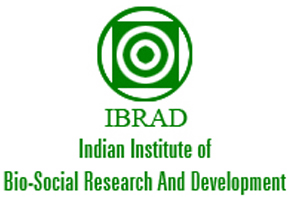Transforming Heart and Mind
For an experienced public functionary, stepping into a tribal village for the first time is not just an administrative act — it is a moral and spiritual journey. The challenge is not one of authority or policy, but of simplicity. To work meaningfully with tribal communities, one must shed the weight of office, position, and protocol and enter with a spirit that is grounded to the earth.
For the seasoned, knowledgeable public servant, the greatest challenge is not the complexity of development, but the courage to be simple. It is to let go of the armour of officialdom and allow the heart and soul to lead the way.
In this transformation lies the true path to engaging tribal communities as equal partners — protectors of the natural ecosystem, co-creators of climate resilience, and fellow custodians of the earth’s future.
Transformation of the heart and mind begins when we allow ourselves to slow down, breathe, and open our senses to the rhythm of the natural ecosystem. In the lap of forests, rivers, and mountains, the ego softens, anxieties melt, and the mind finds calm. Nature does not rush; it teaches patience, humility, and balance.
When we walk gently on the earth, listen to birdsong, or feel the cool shade of a tree, something shifts inside us — a quiet reminder that we are not masters of nature, but a small part of its vast, living web. This realisation humbles us.
In this state of simplicity, we become more human — relaxed, cool, approachable. Our words carry sincerity, and our actions touch the hearts of the people around us. The transformation is not external; it is an inner alignment of mind and heart with the flow of life.
Such transformation allows leaders, public functionaries, and ordinary people alike to connect deeply with communities — not through authority, but through shared humanity and respect.
Tribal societies have lived in close relationship with forests, rivers, and mountains for generations. Their governance is not written in manuals but etched in rituals, oral traditions, and the rhythm of nature. When a functionary approaches them with technical jargon or bureaucratic detachment, a wall is immediately built. But when the approach is simple — a shared meal, a walk through the forest, listening to stories under a tree — bridges emerge.
Simplicity is not about lack of sophistication. It is about humility: the ability to let go of the self-image of “one who knows,” and to adopt the posture of “one who wishes to learn.” It requires a conscious lowering of barriers so that the warmth of human connection can flow naturally.
Policies alone cannot transform lives; it is the human heart that creates trust. When a functionary enters a tribal village, the first task is not to outline schemes, but to transform the self — to listen deeply, to feel the pulse of the community, and to allow one’s soul to be touched by their wisdom.
This inner transformation creates space for genuine partnership. It helps the official recognize that tribals are not passive beneficiaries but active stewards of ecosystems. Their knowledge of soil, seeds, herbs, and weather cycles is invaluable for climate resilience. Respecting this knowledge requires more than formal acknowledgment — it requires heartfelt acceptance.
- Sitting on the same mat, eating the same food, walking the same paths.
- Listening without interrupting, and asking without instructing.
- Accepting silence as much as speech.
- Recognizing that true dignity comes not from office, but from shared humanity.
- From Beneficiary to Co-creator – Tribals are not to be “helped” but to be invited as co-designers of solutions.
- From Schemes to Relationships – A scheme succeeds only if it is woven into the fabric of community trust.
- From Policy to Participation – Participation emerges when the community feels their dignity and wisdom are valued.
- Engages logic, facts, and information.
- People may understand what you say, but they may not feel moved by it.
- It appeals to reasoning — “this project will increase income” or “this scheme will provide facilities.”
- Impact is often temporary; once the logic is challenged or forgotten, the connection weakens.
- It convinces, but does not necessarily inspire.
- Engages emotions, trust, and shared values.
- People feel respected, seen, and cared for.
- It appeals to dignity, identity, and belonging — “your wisdom is precious,” “we are partners in protecting this forest,” “your children’s future matters to us.”
- Impact is long-lasting; people remember how you made them feel, not just what you said.
- It inspires commitment, ownership, and willingness to walk together.
- Mind = Information → Agreement
- Heart = Emotion + Trust → Transformation
When you reach the heart, you gain trust, partnership, and lasting change.
